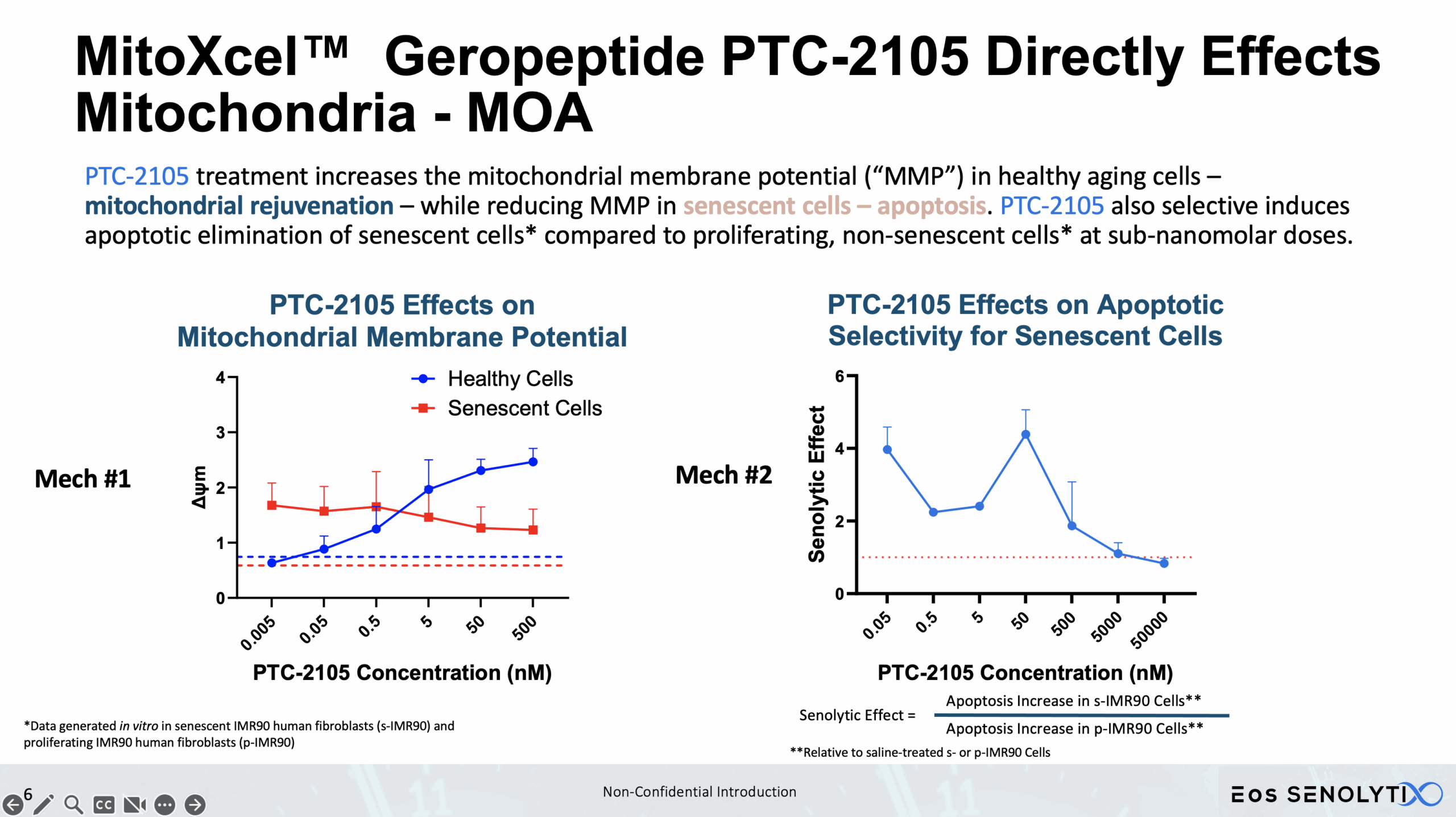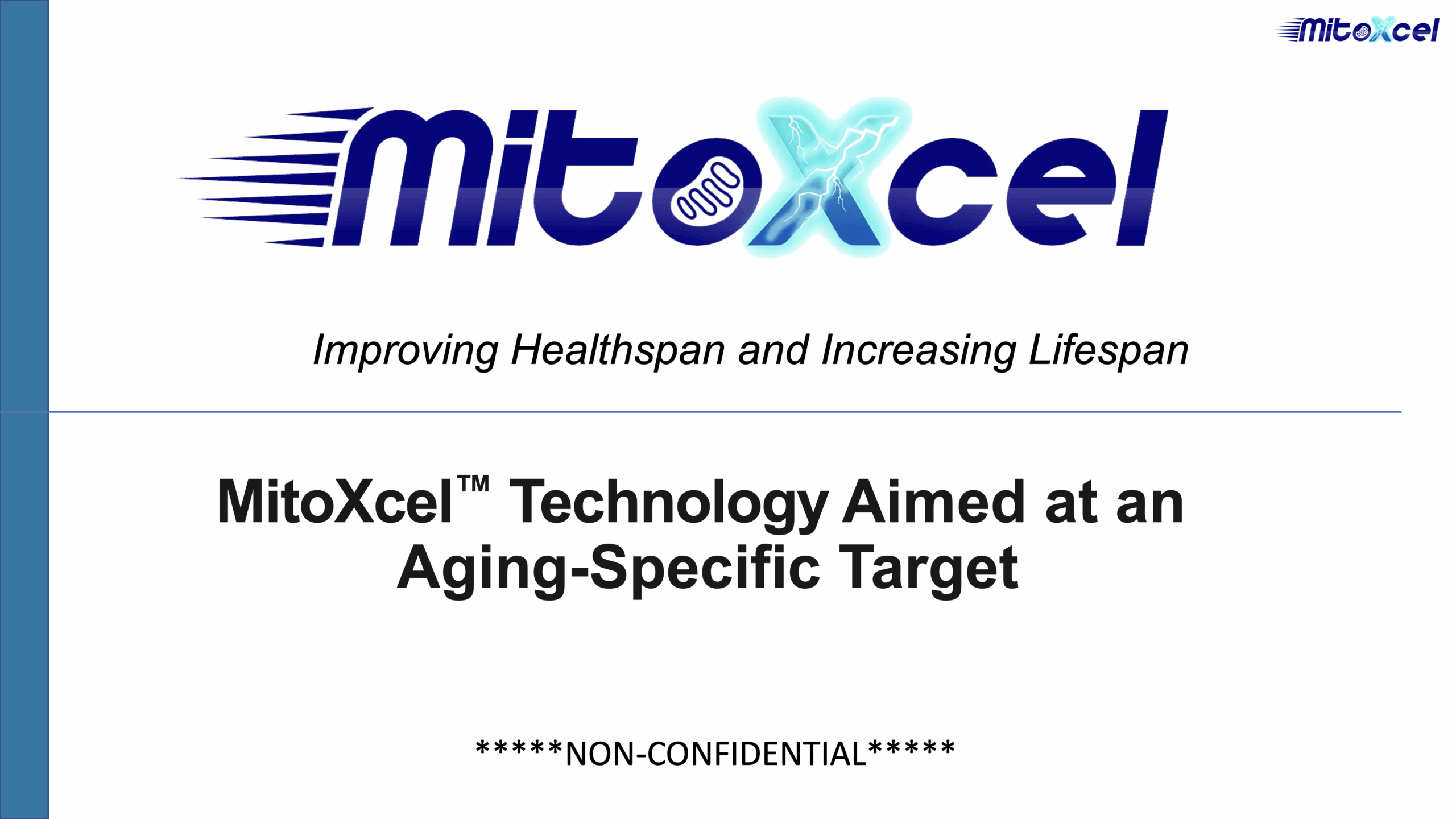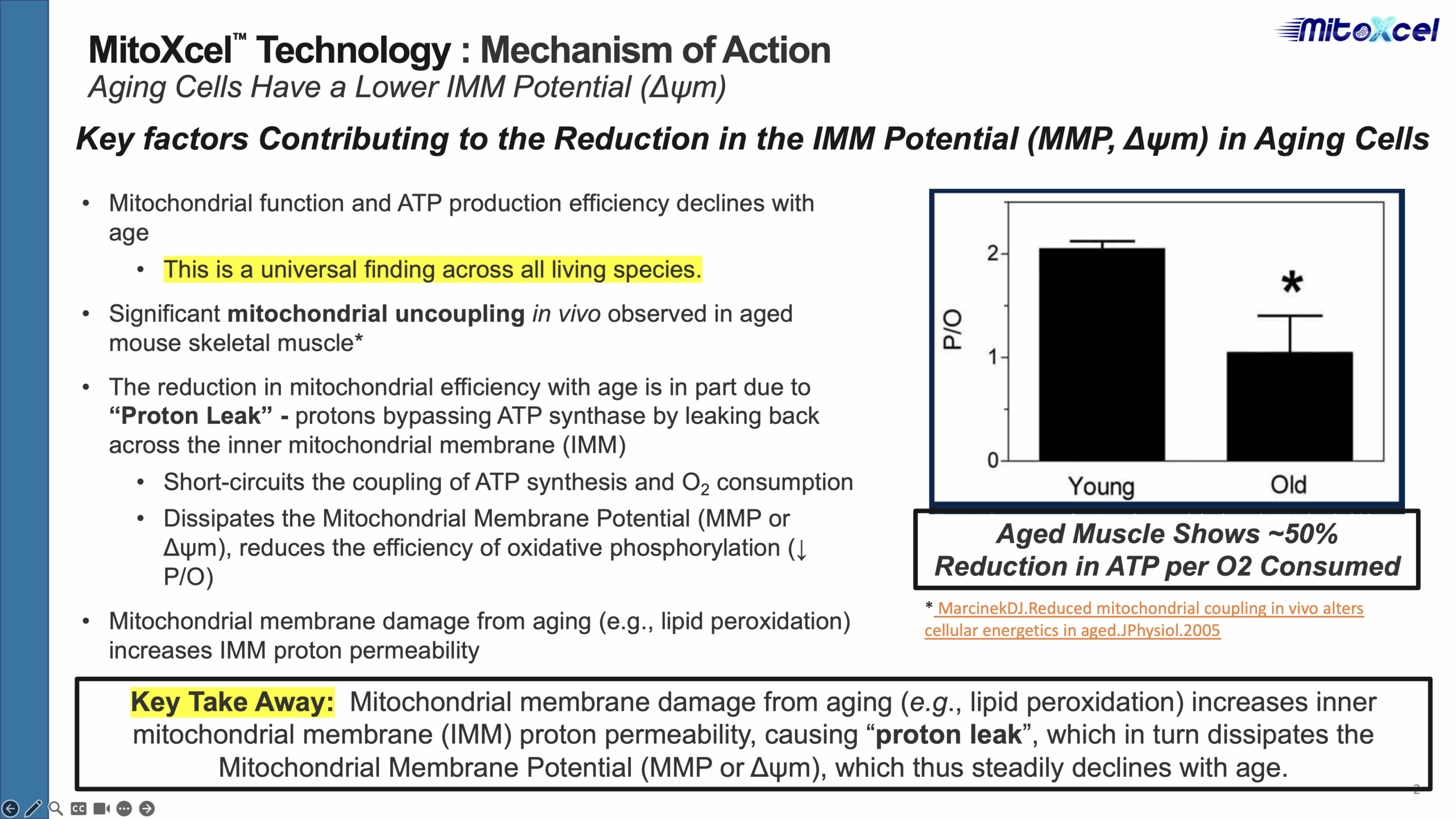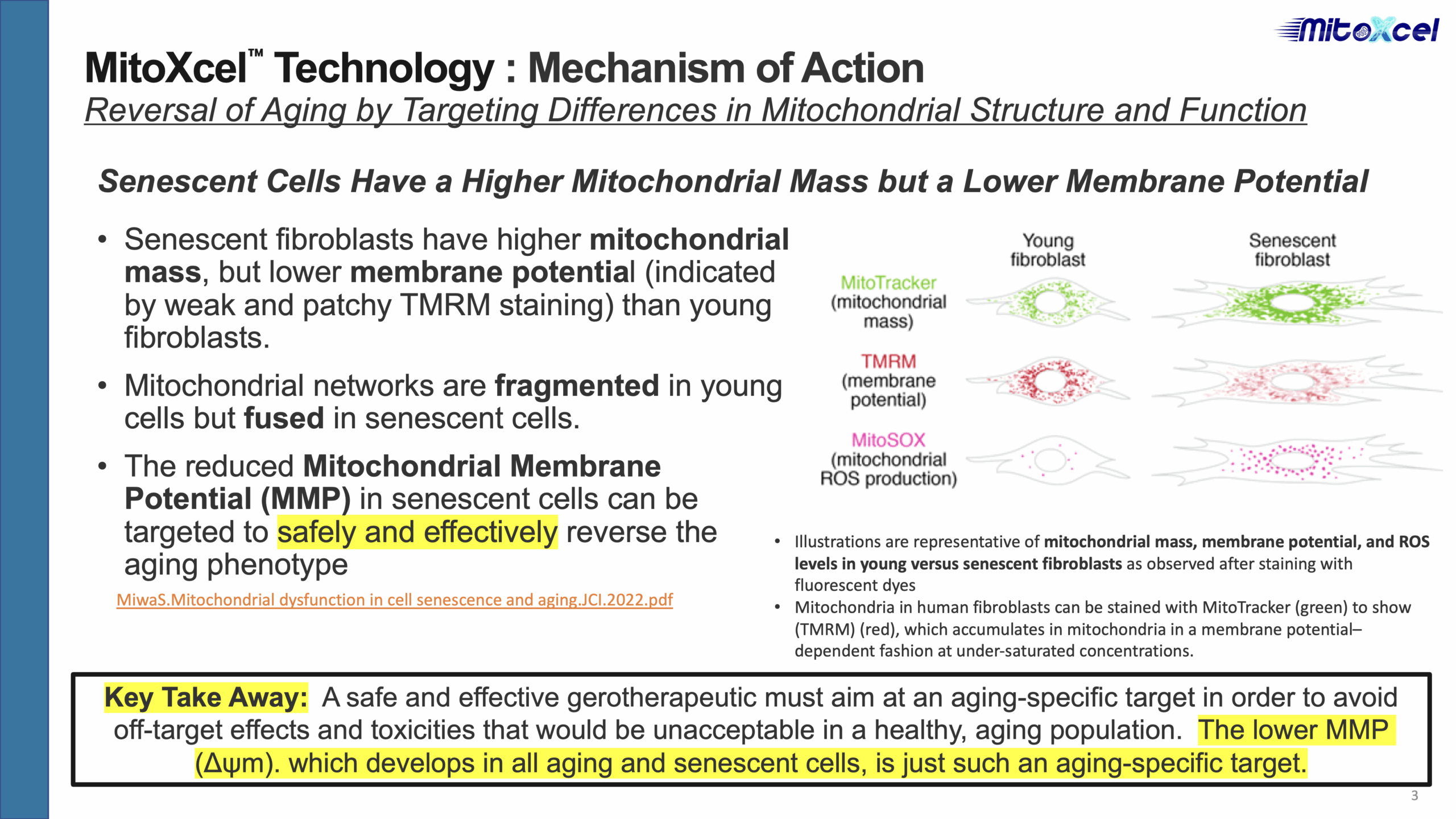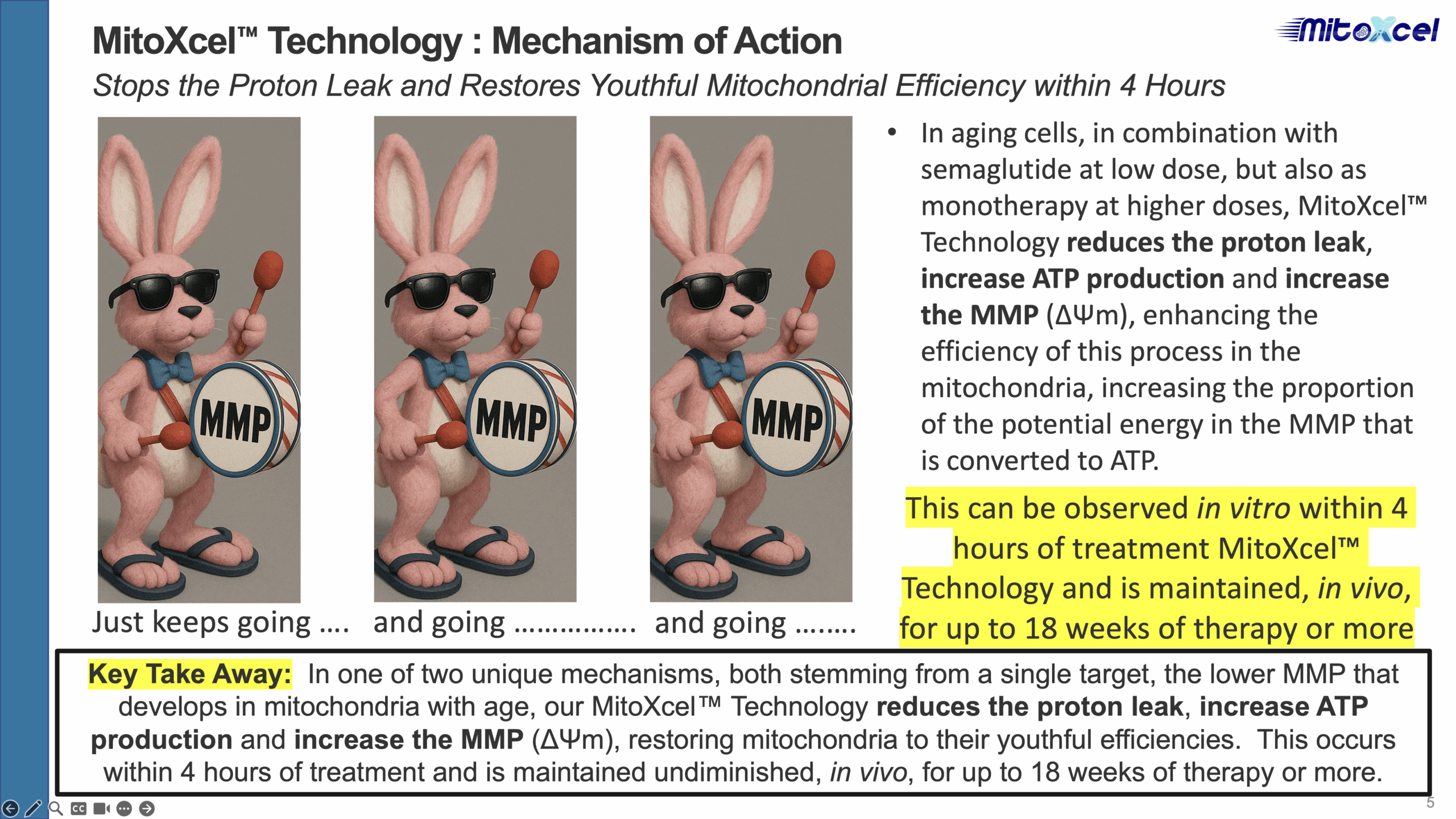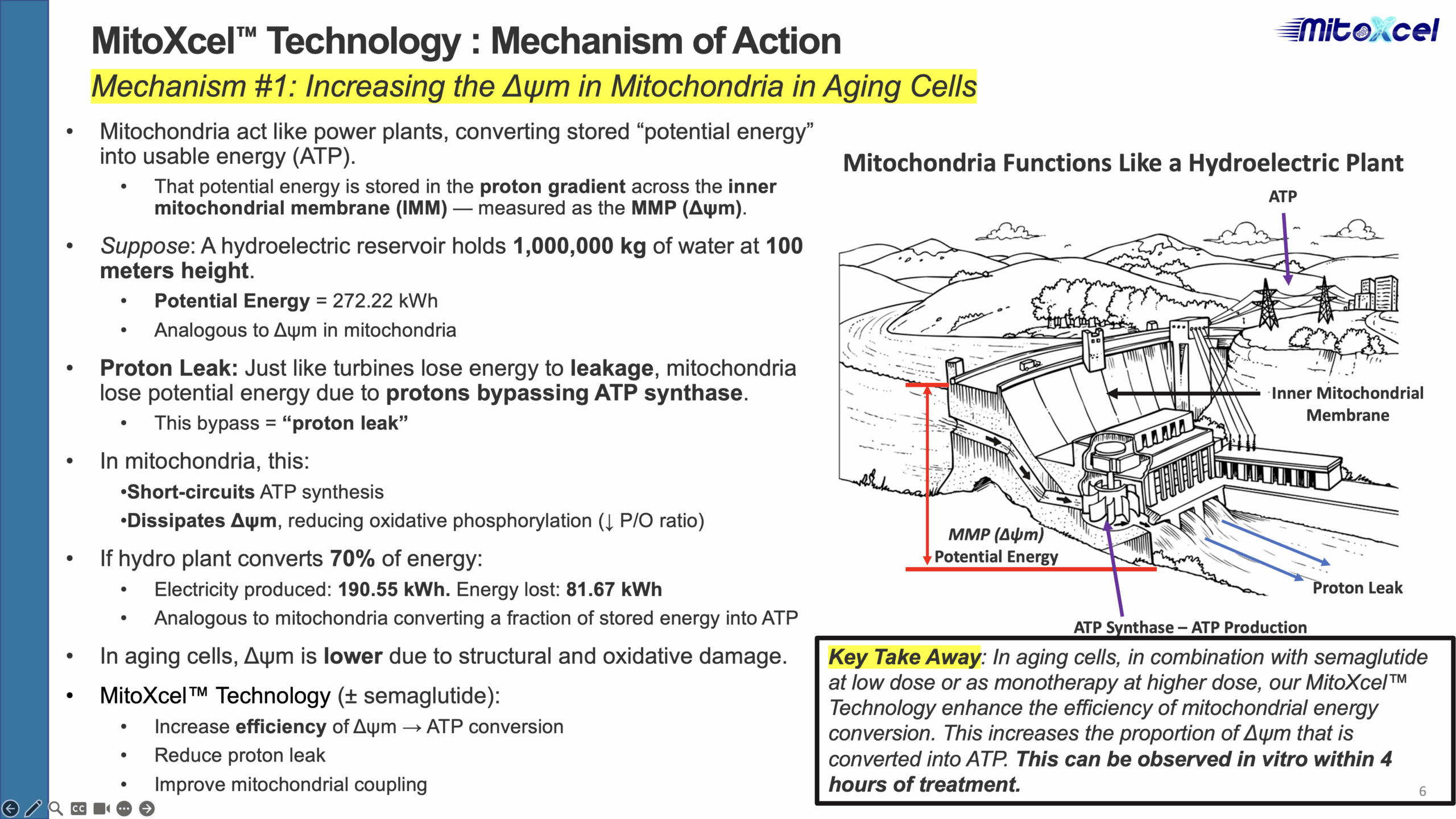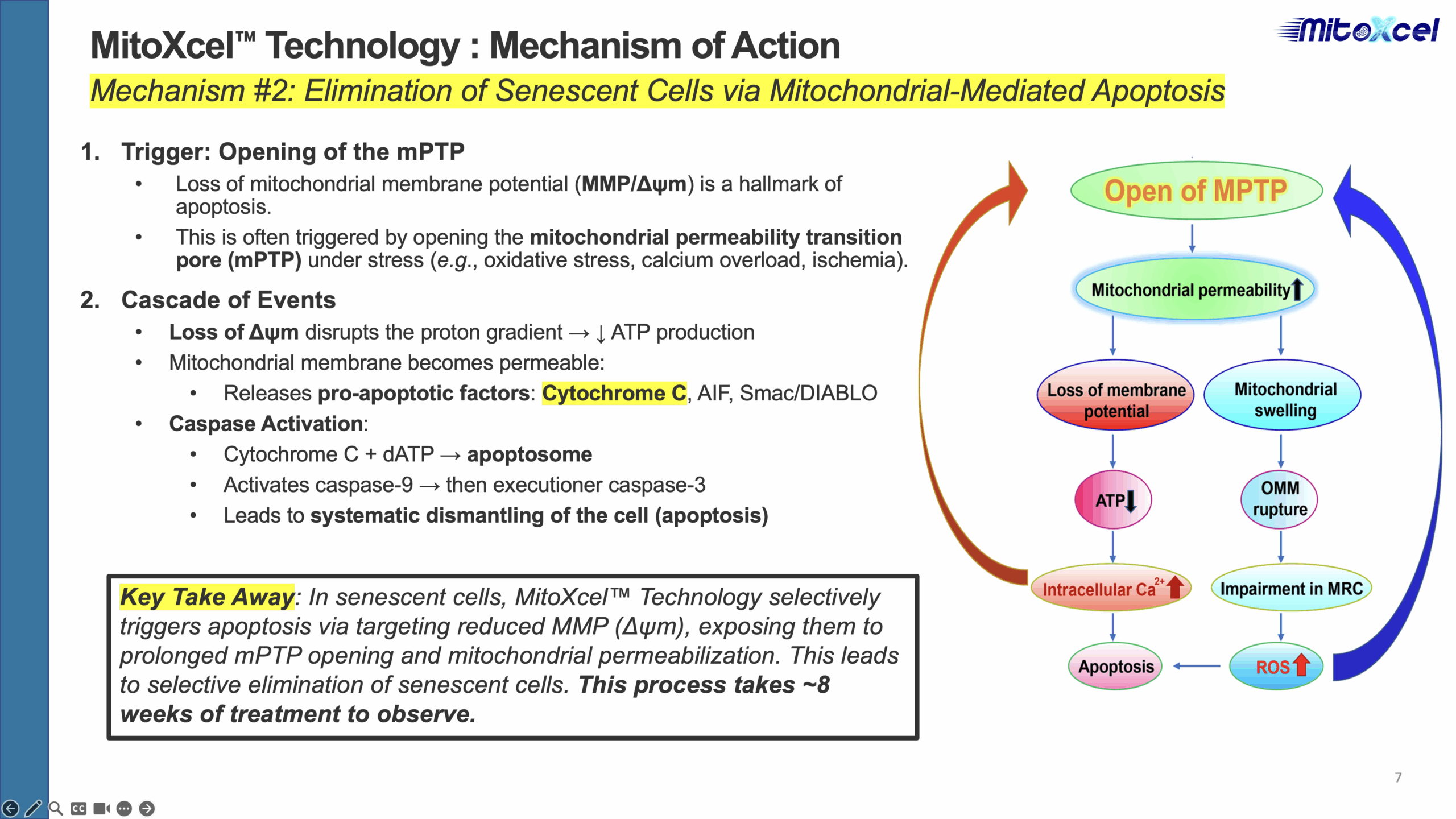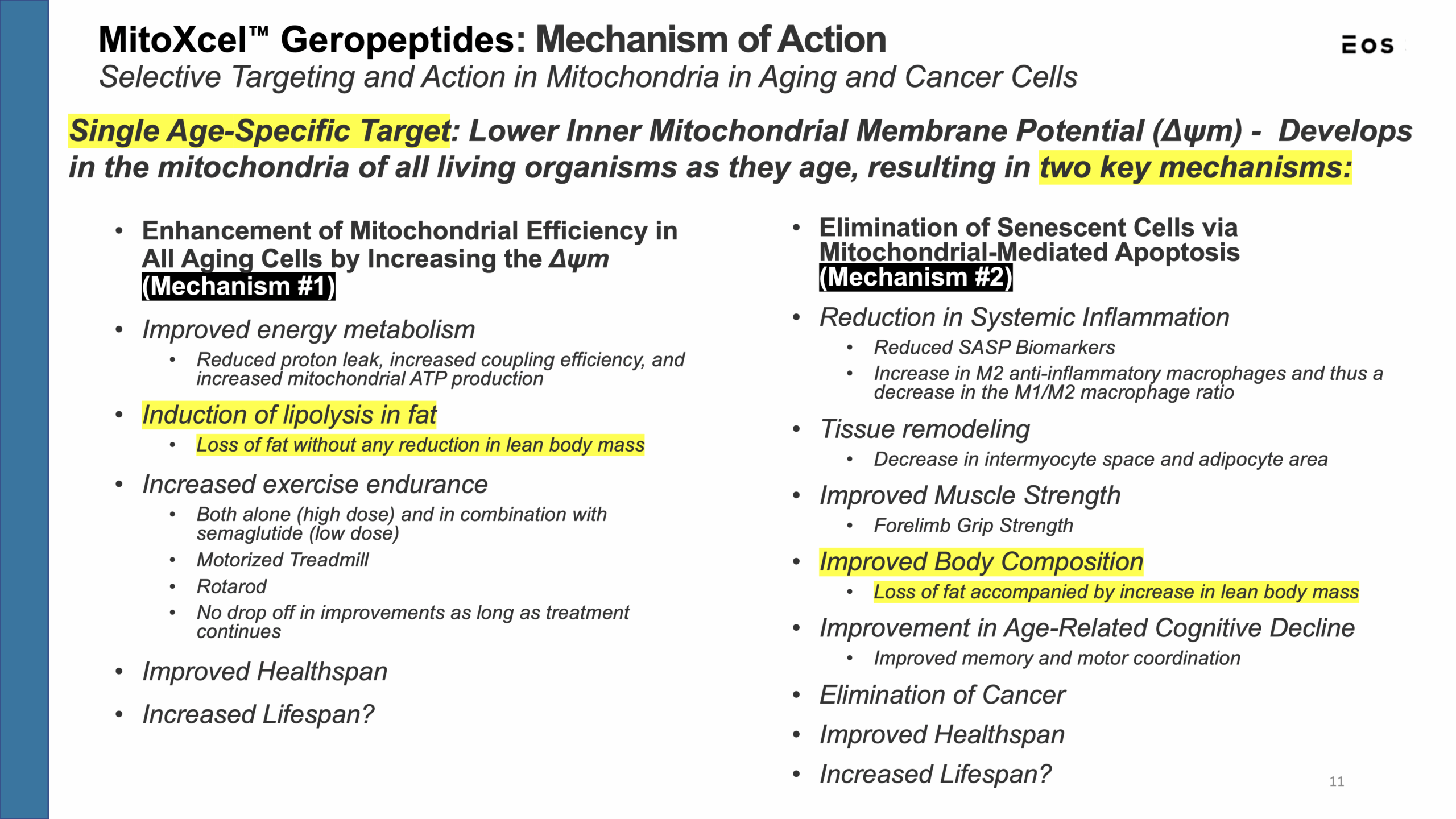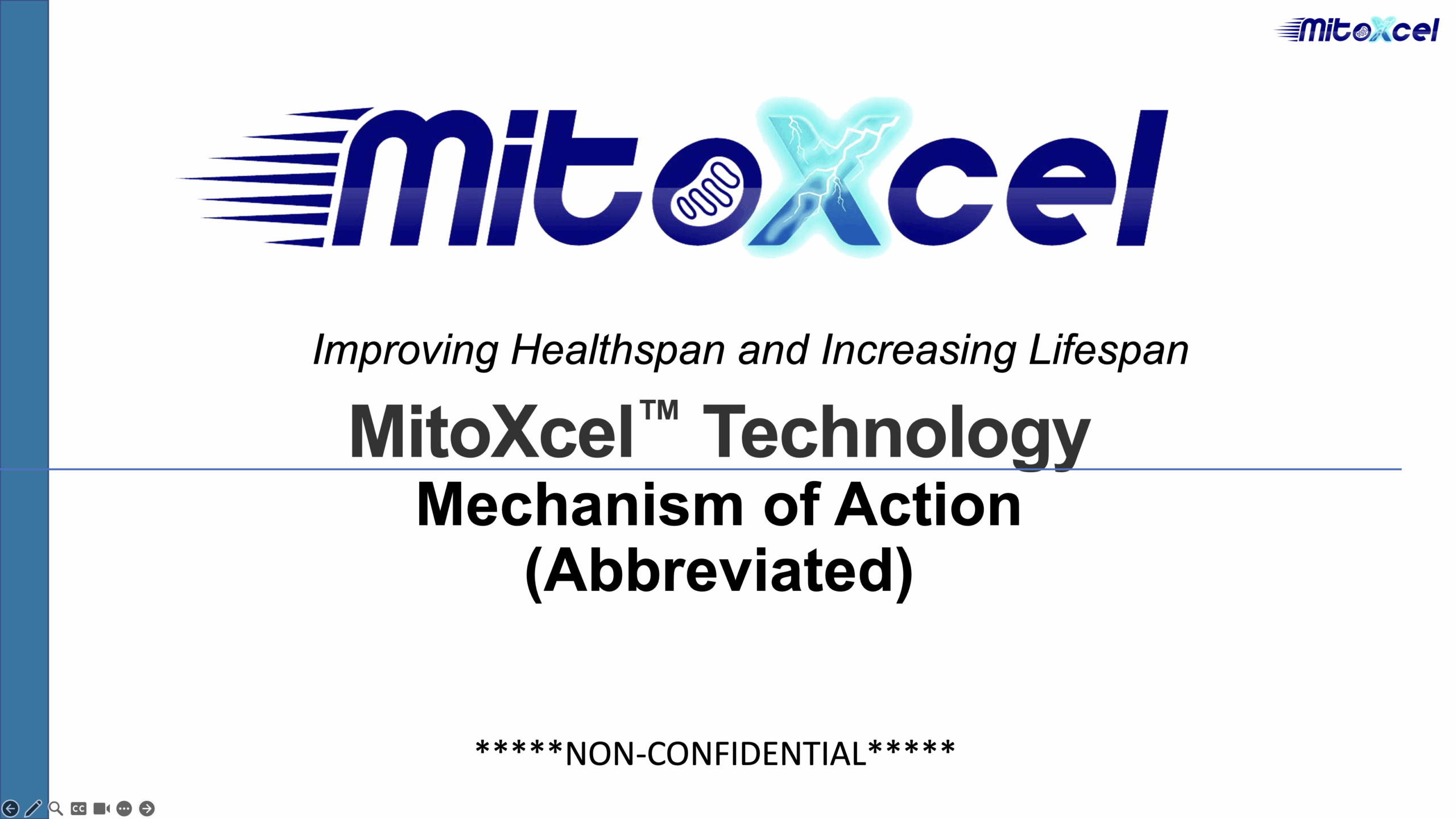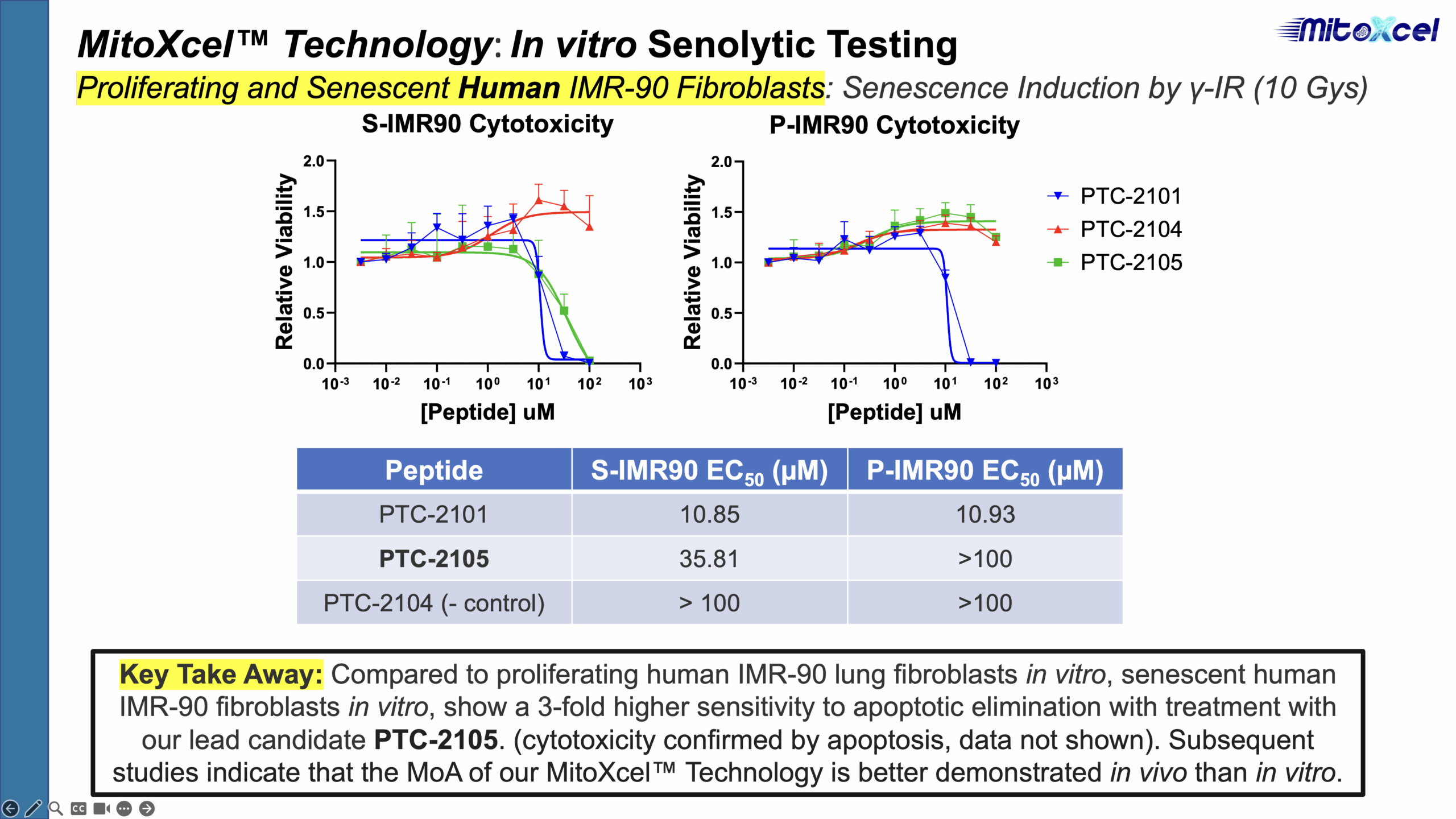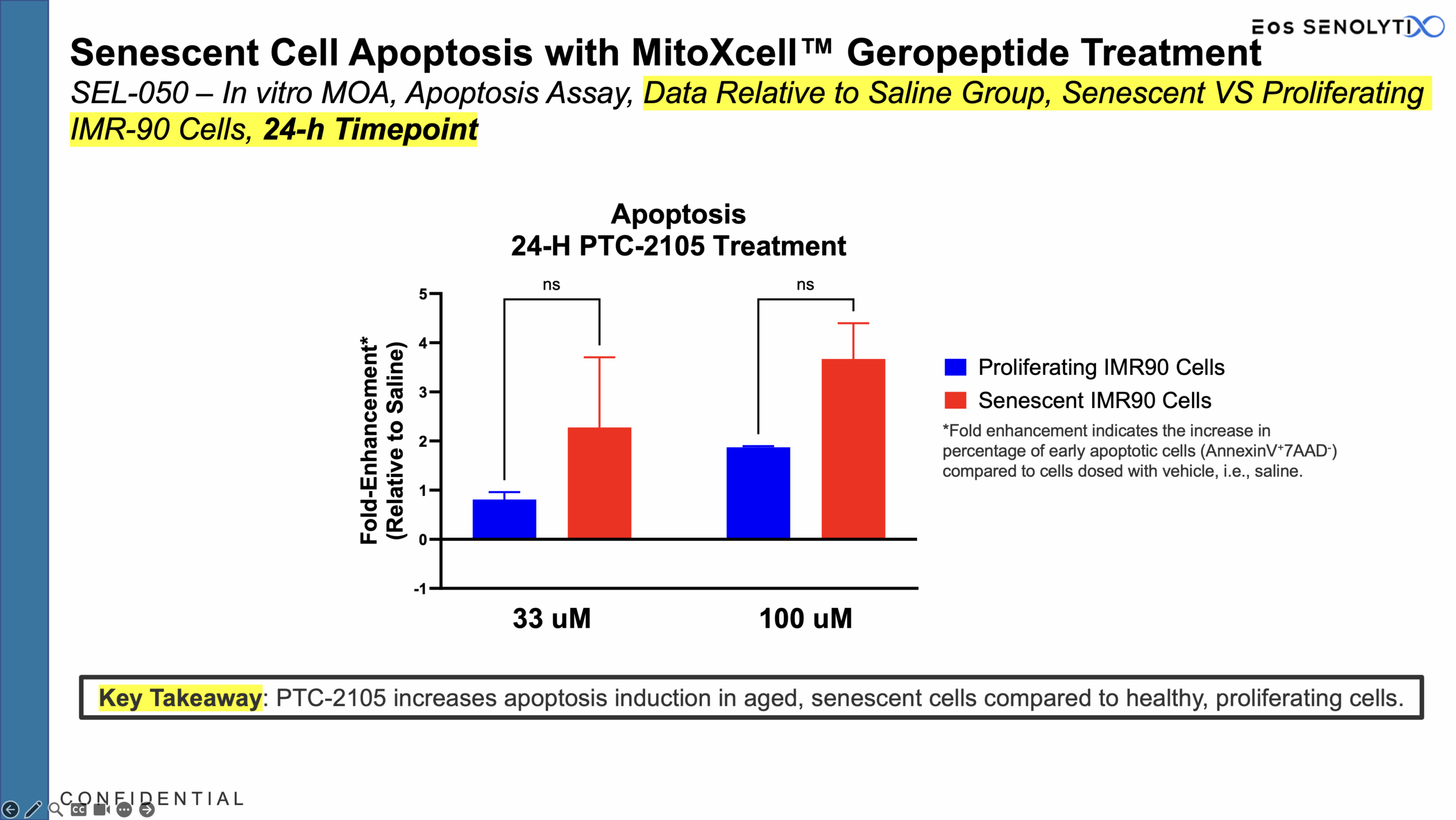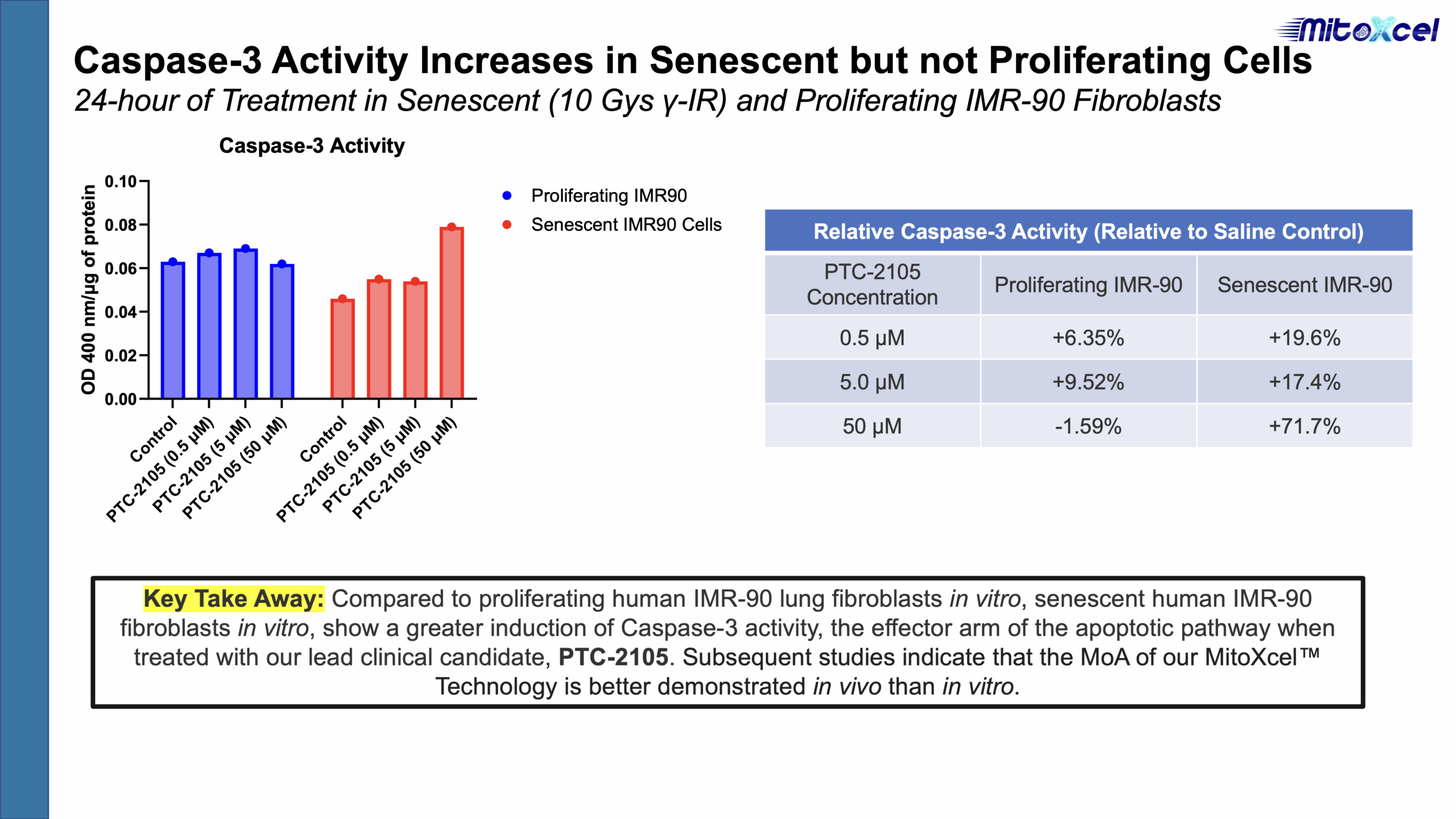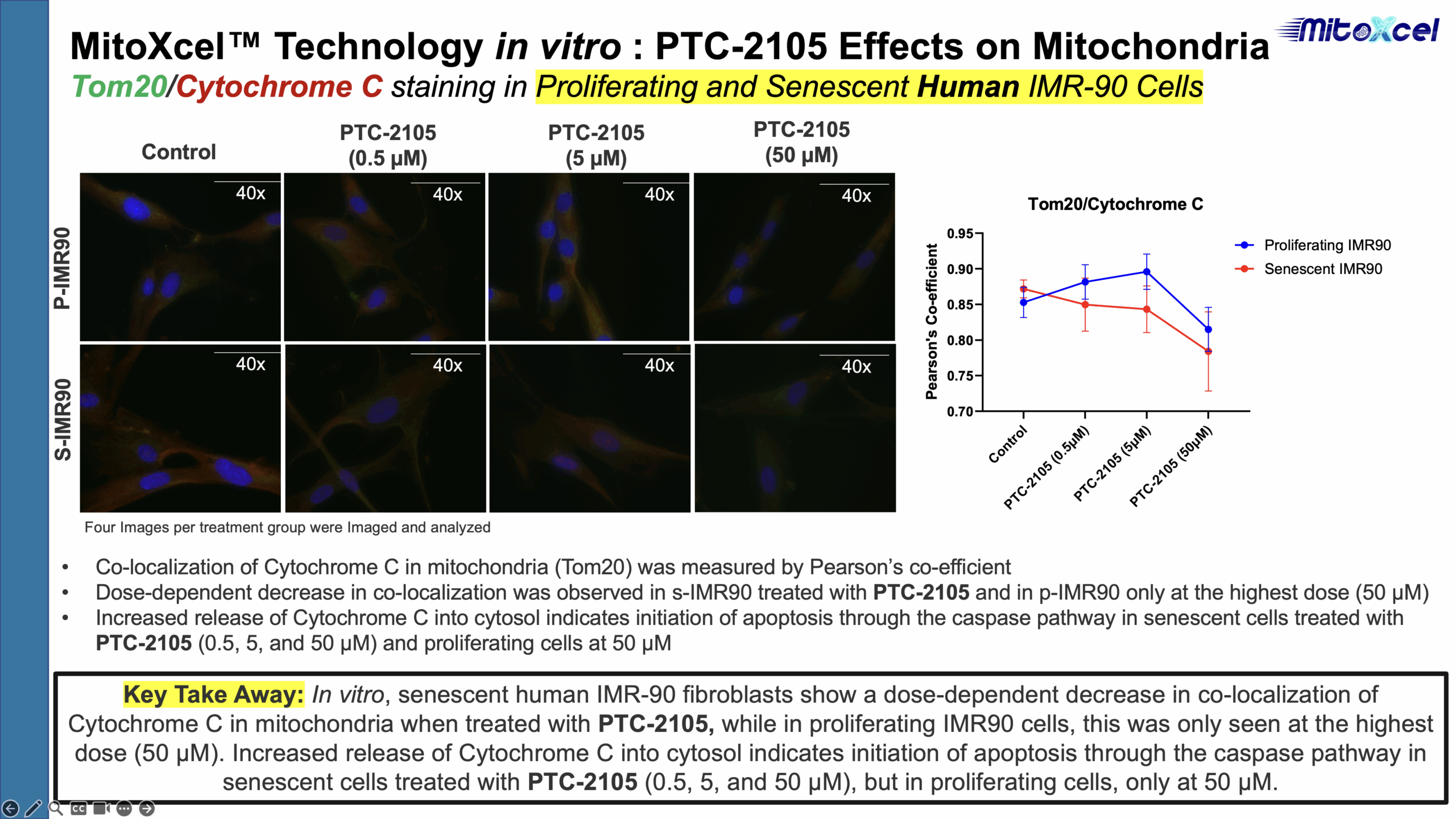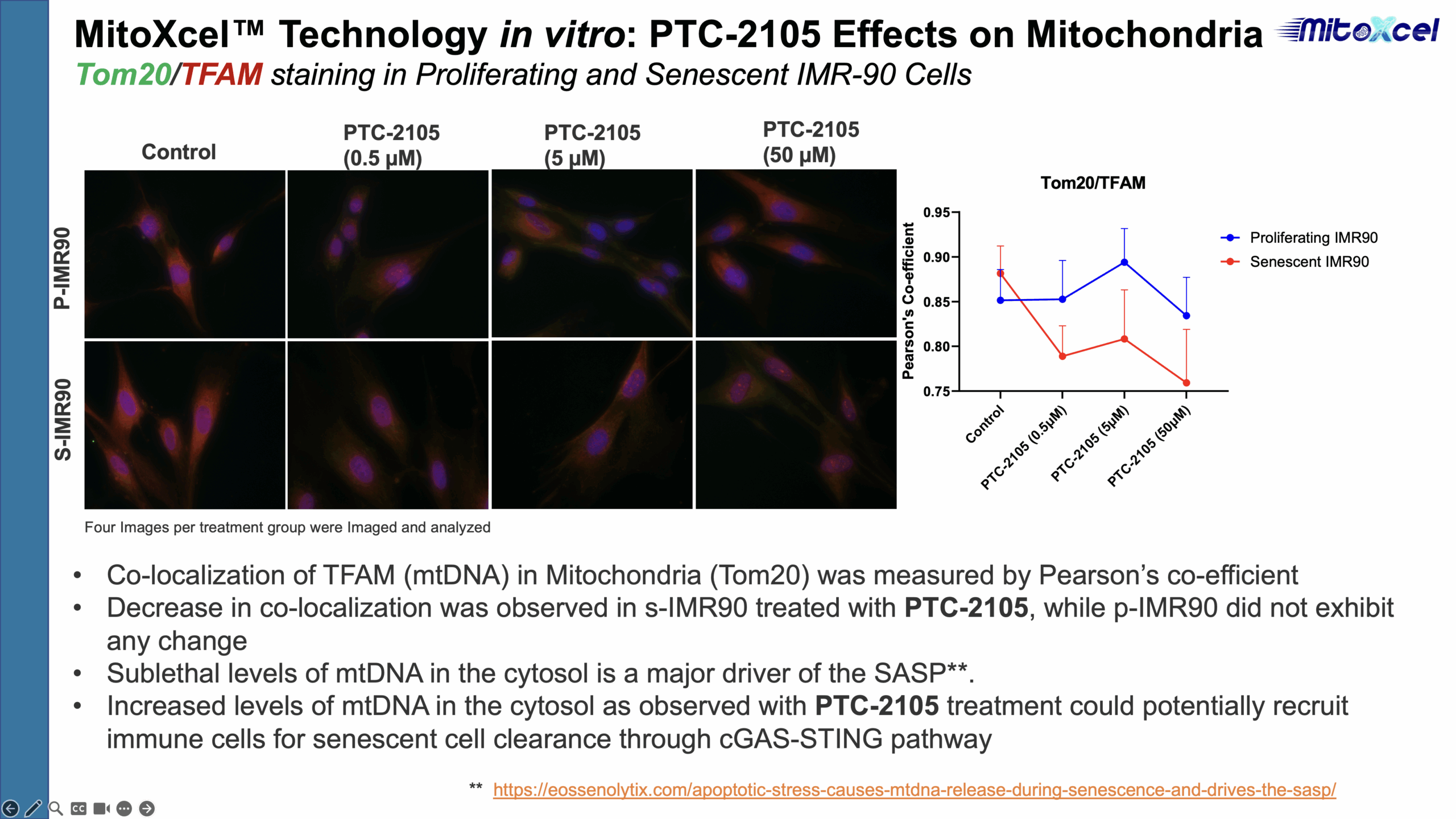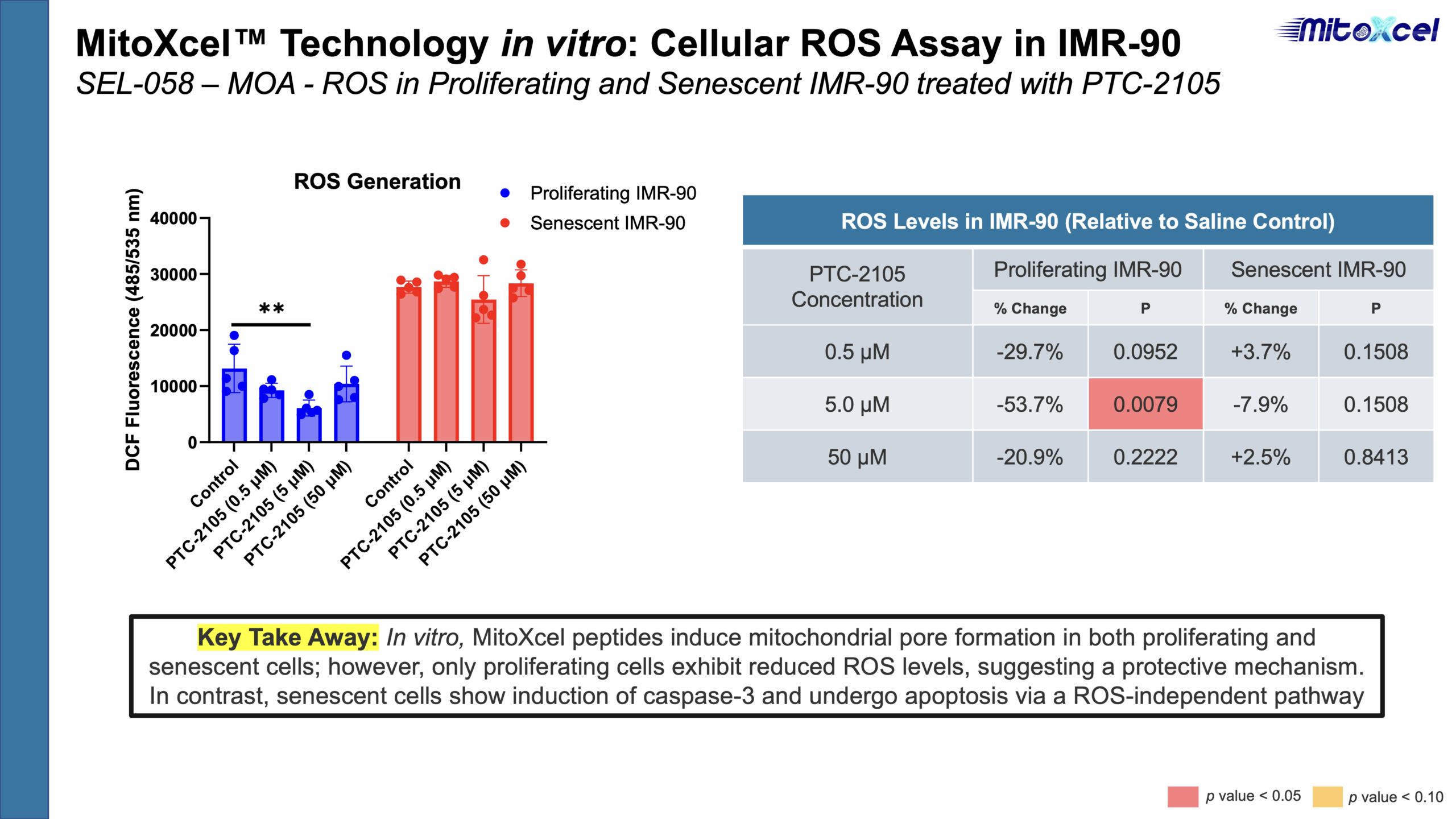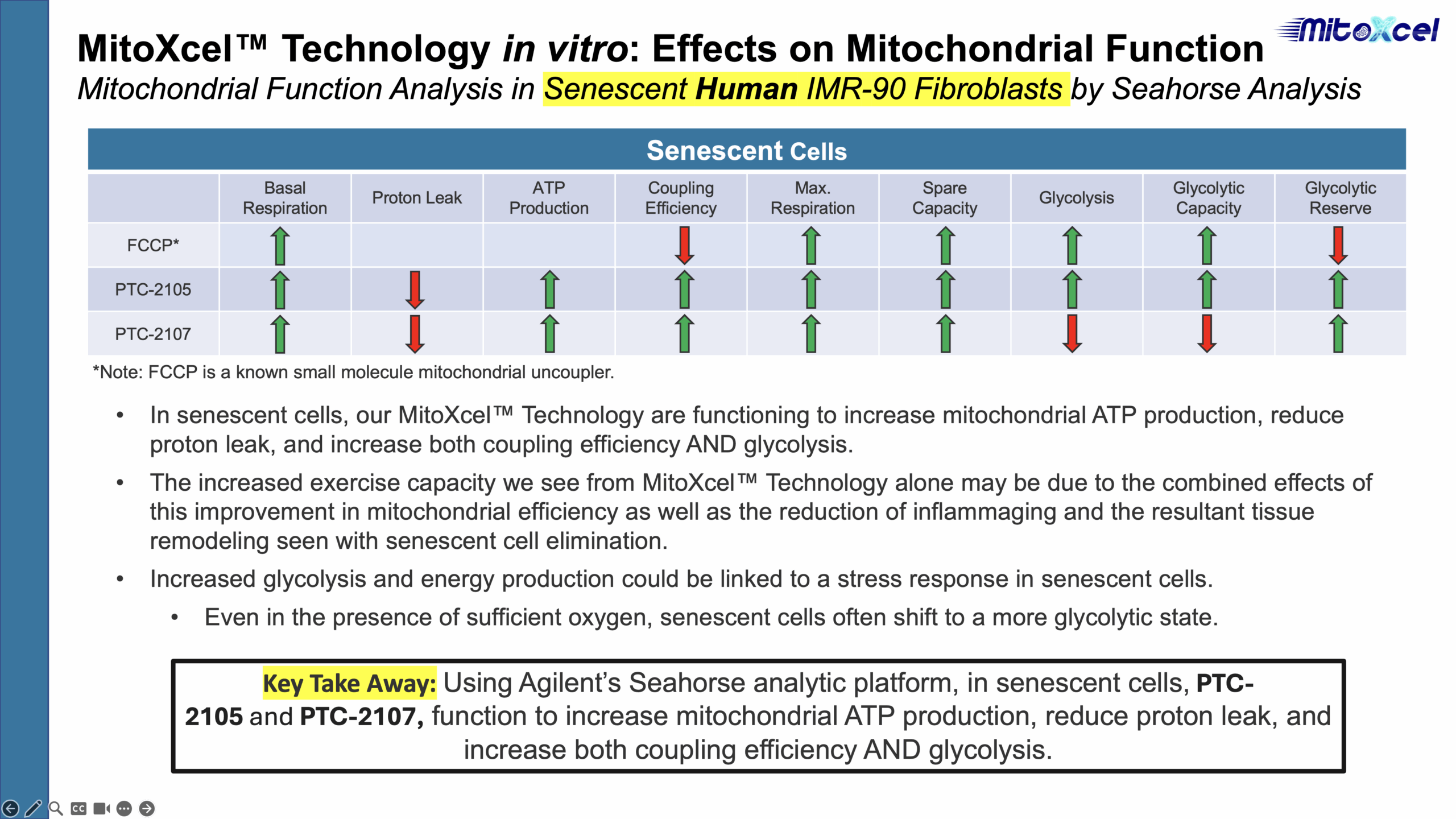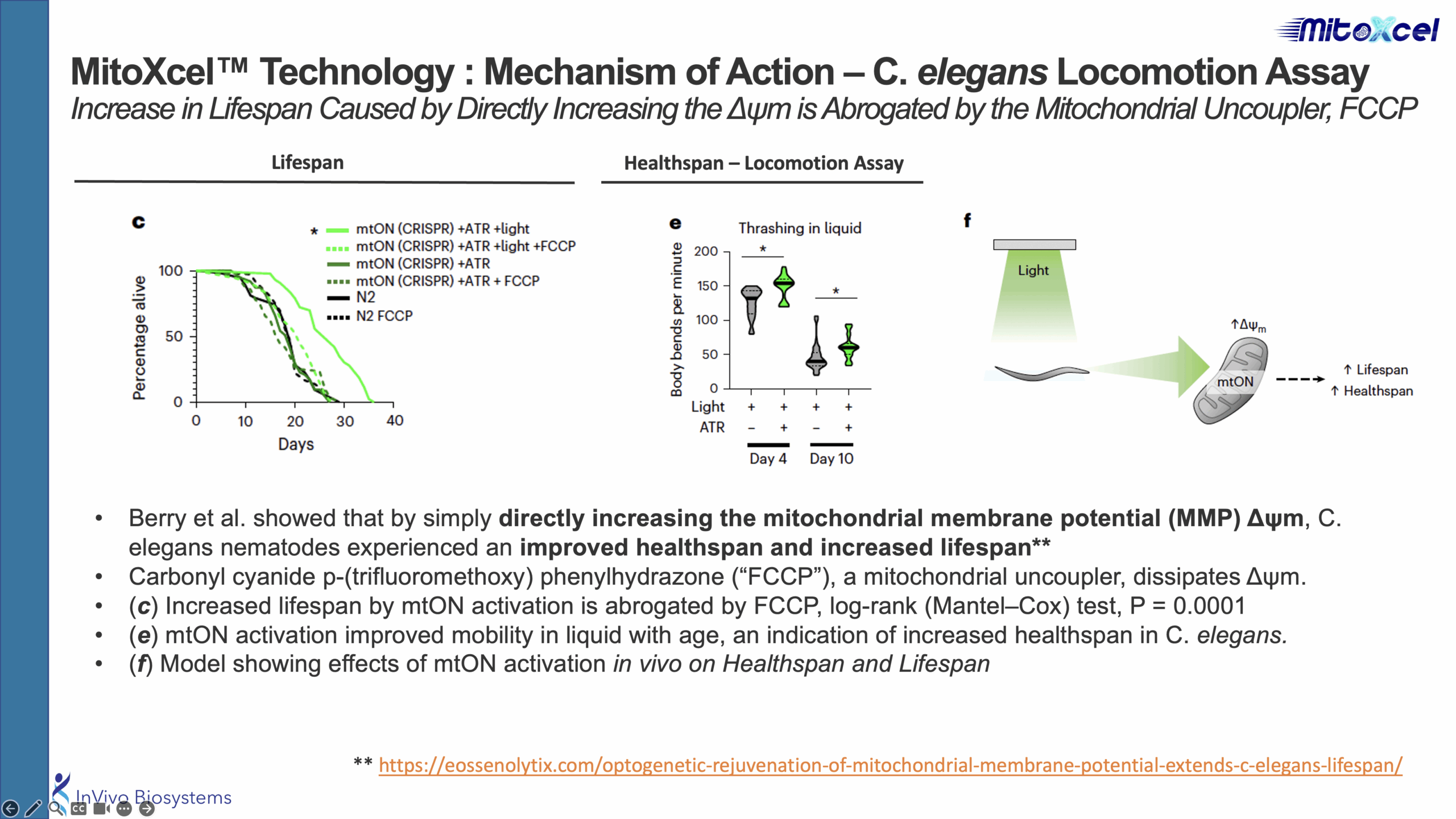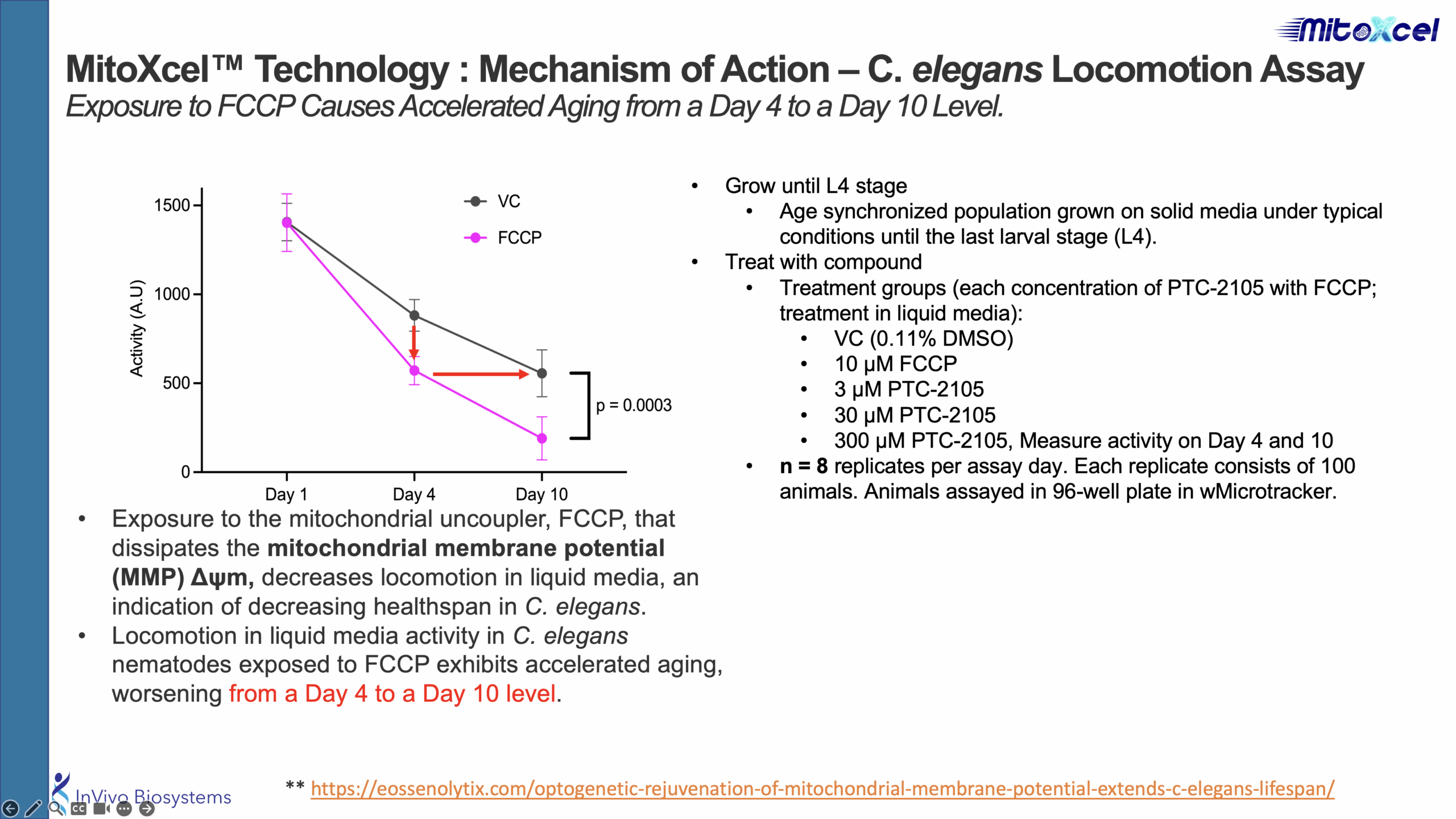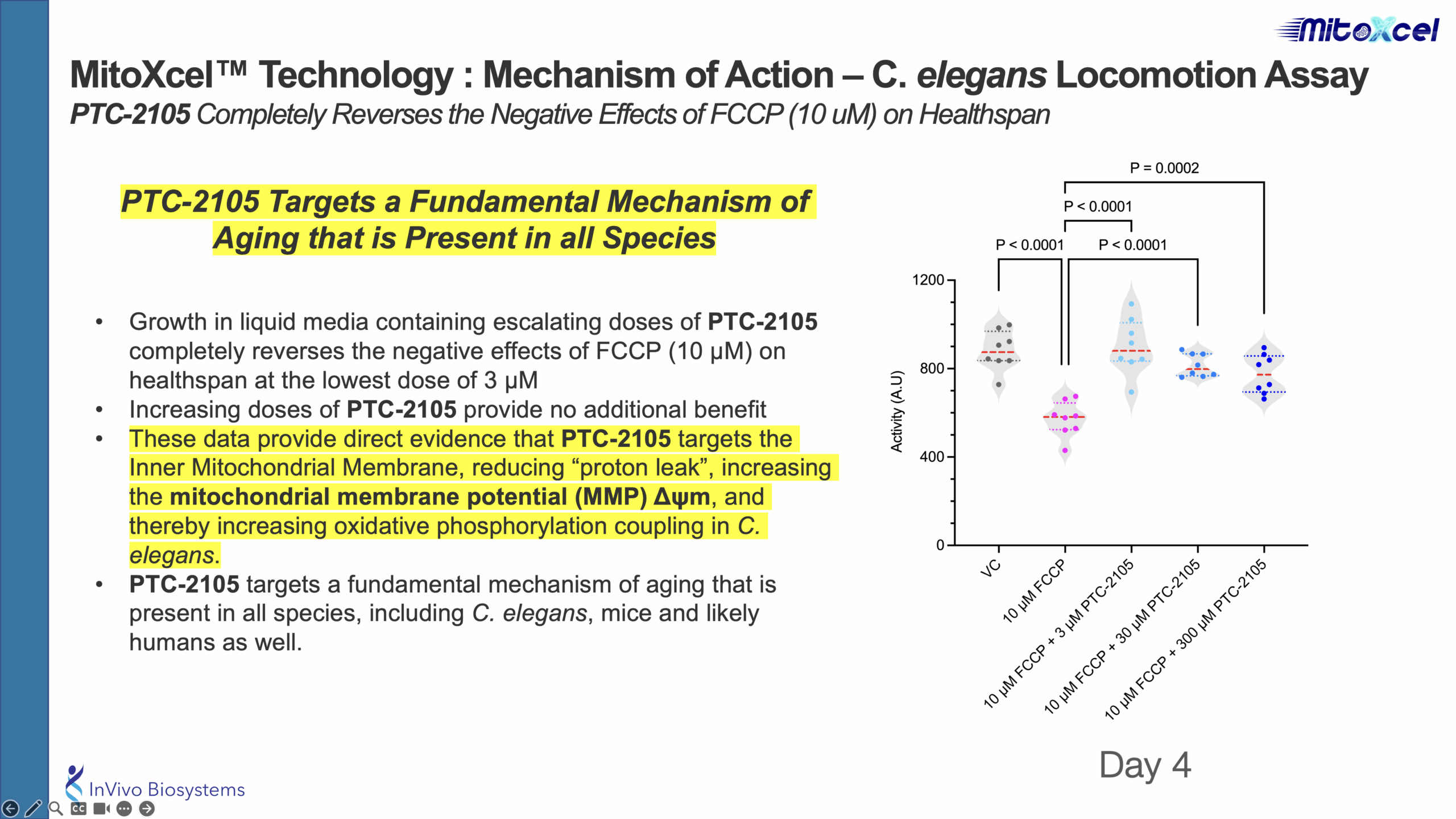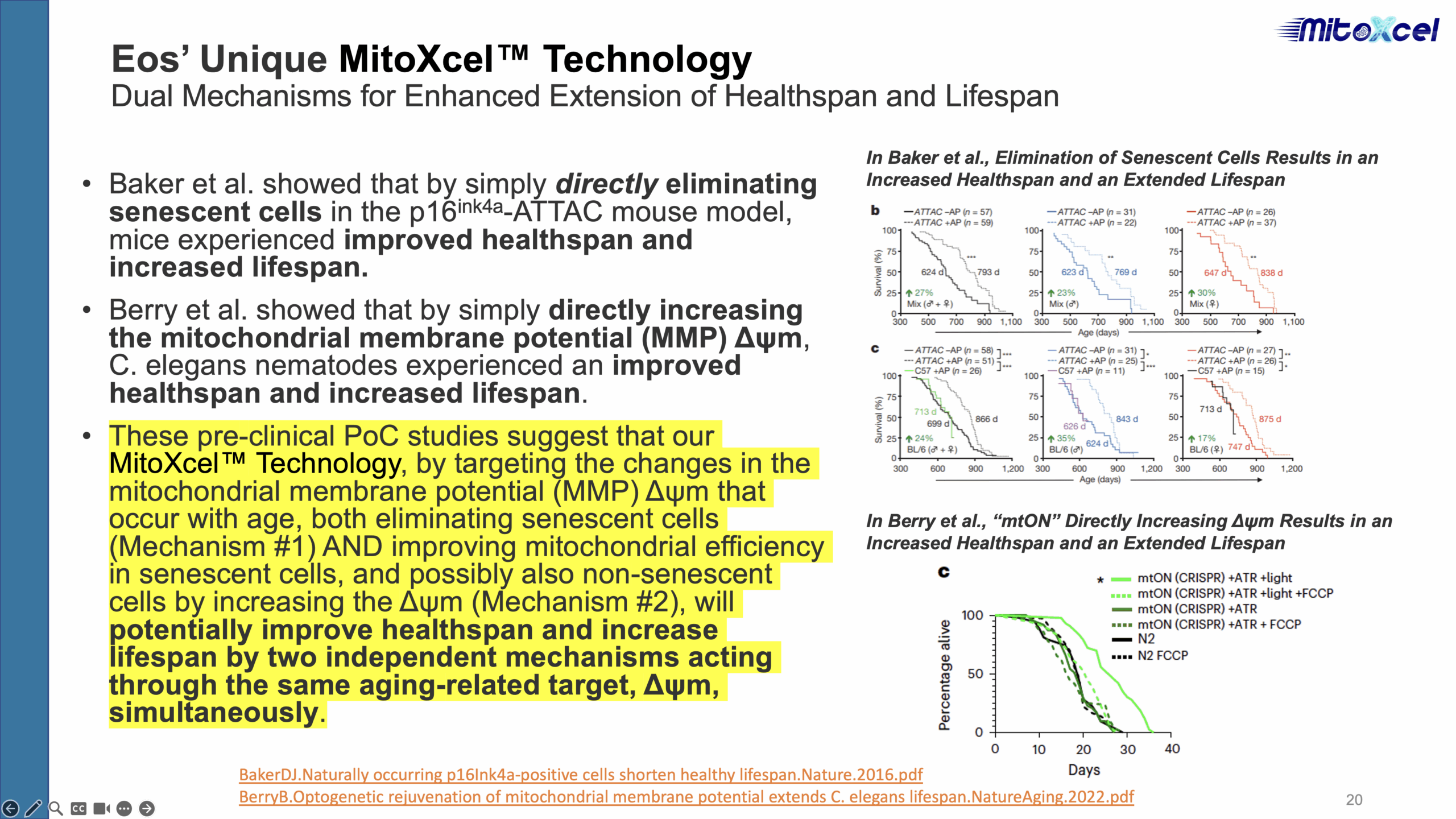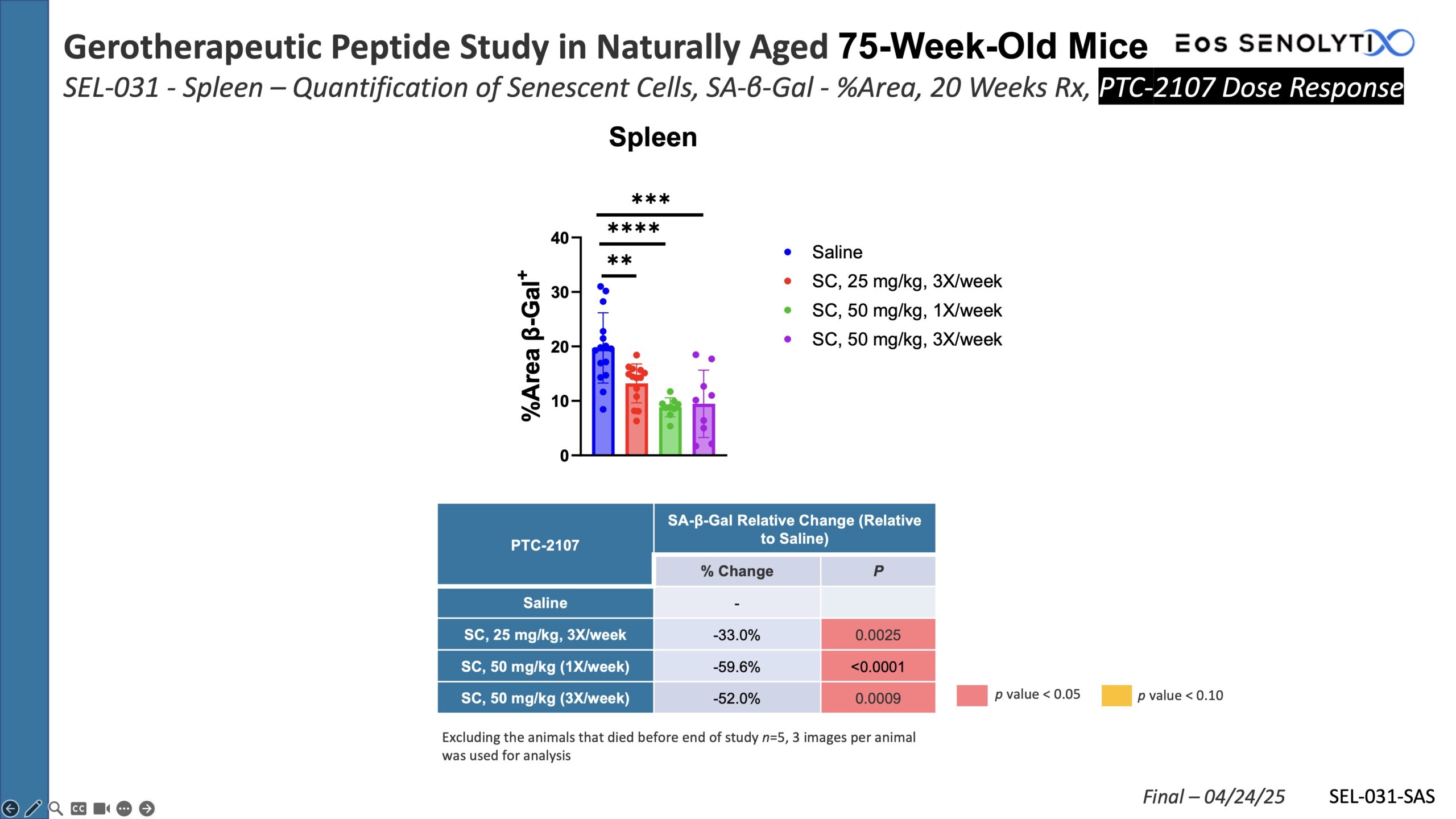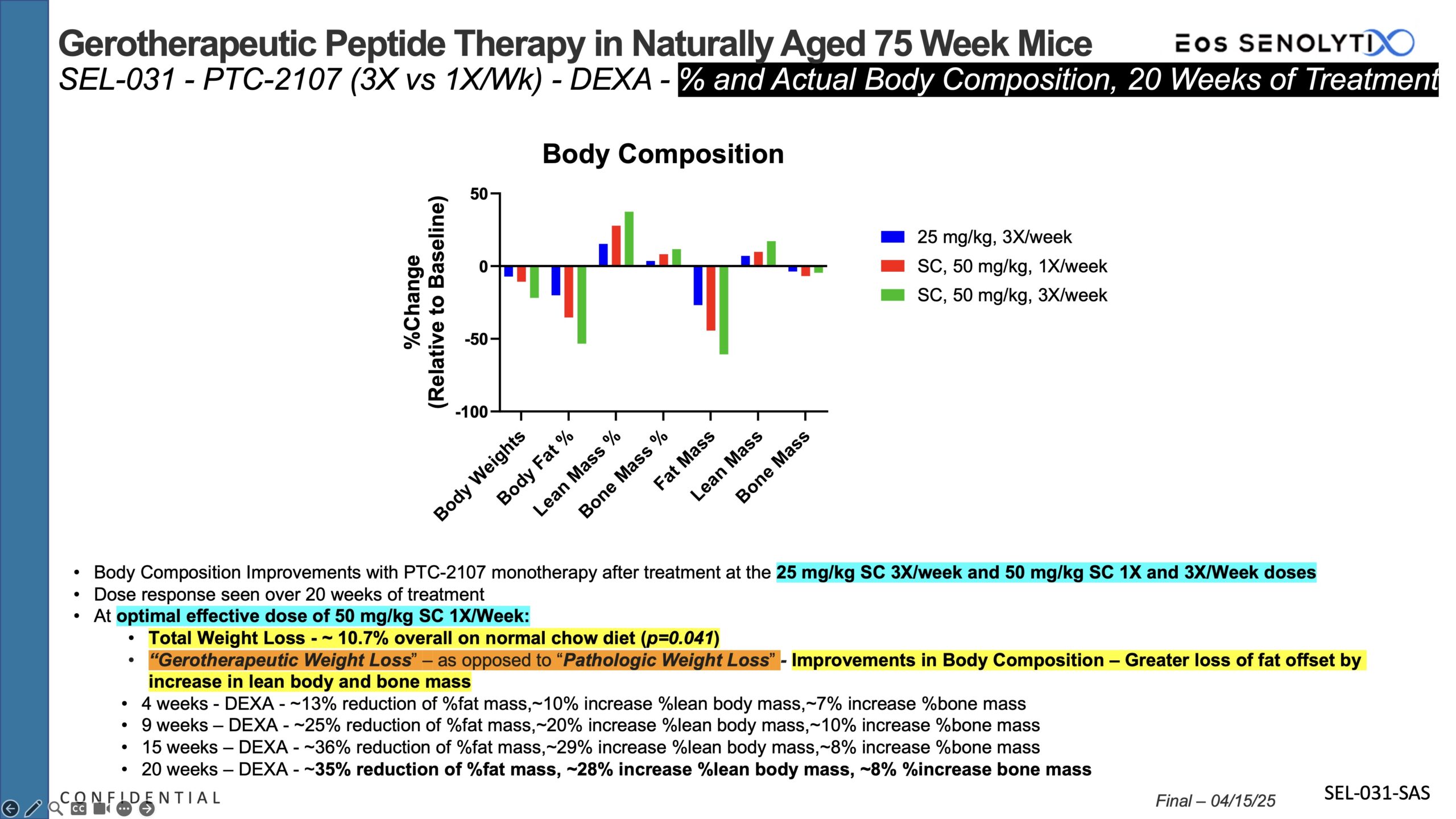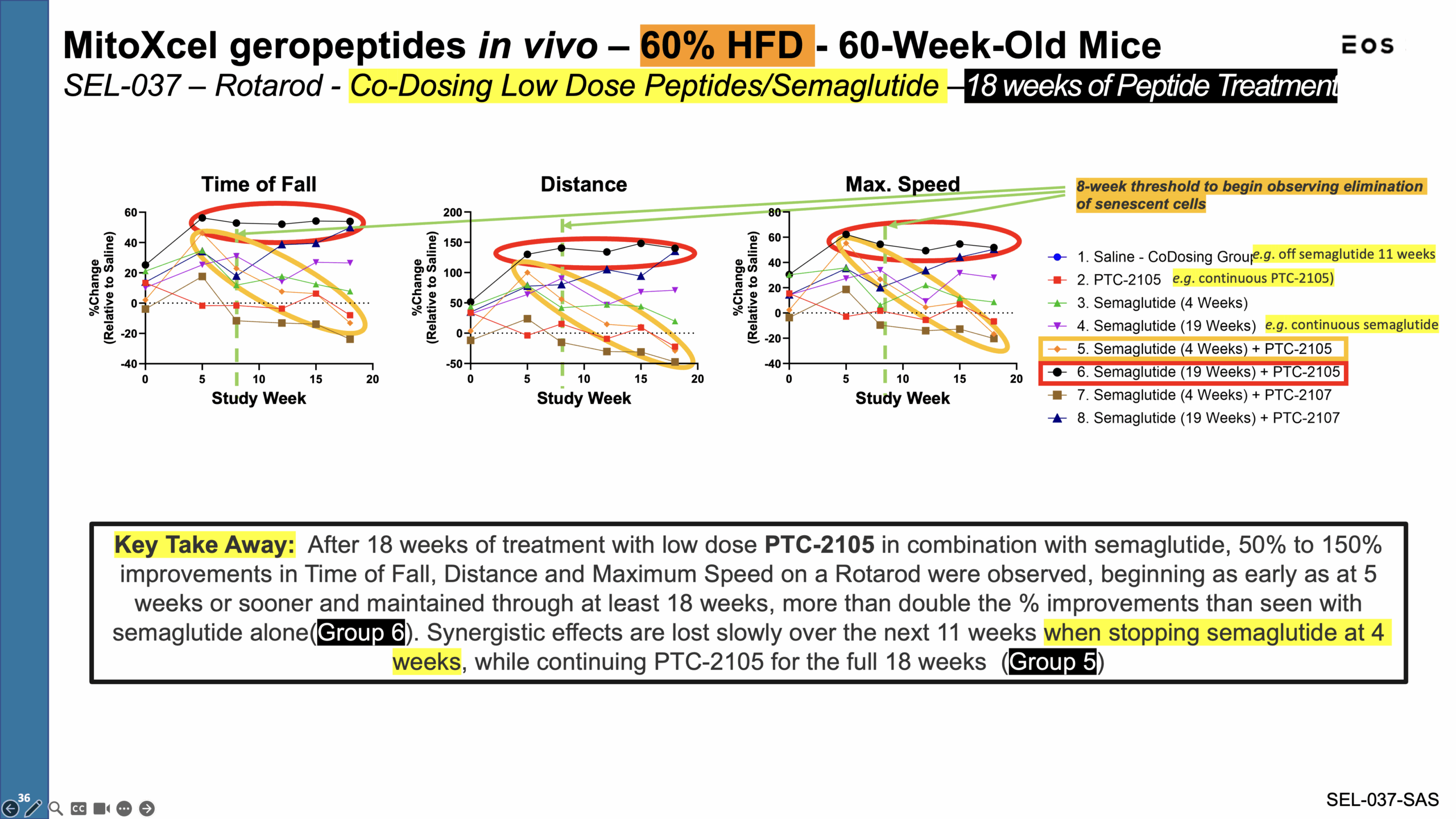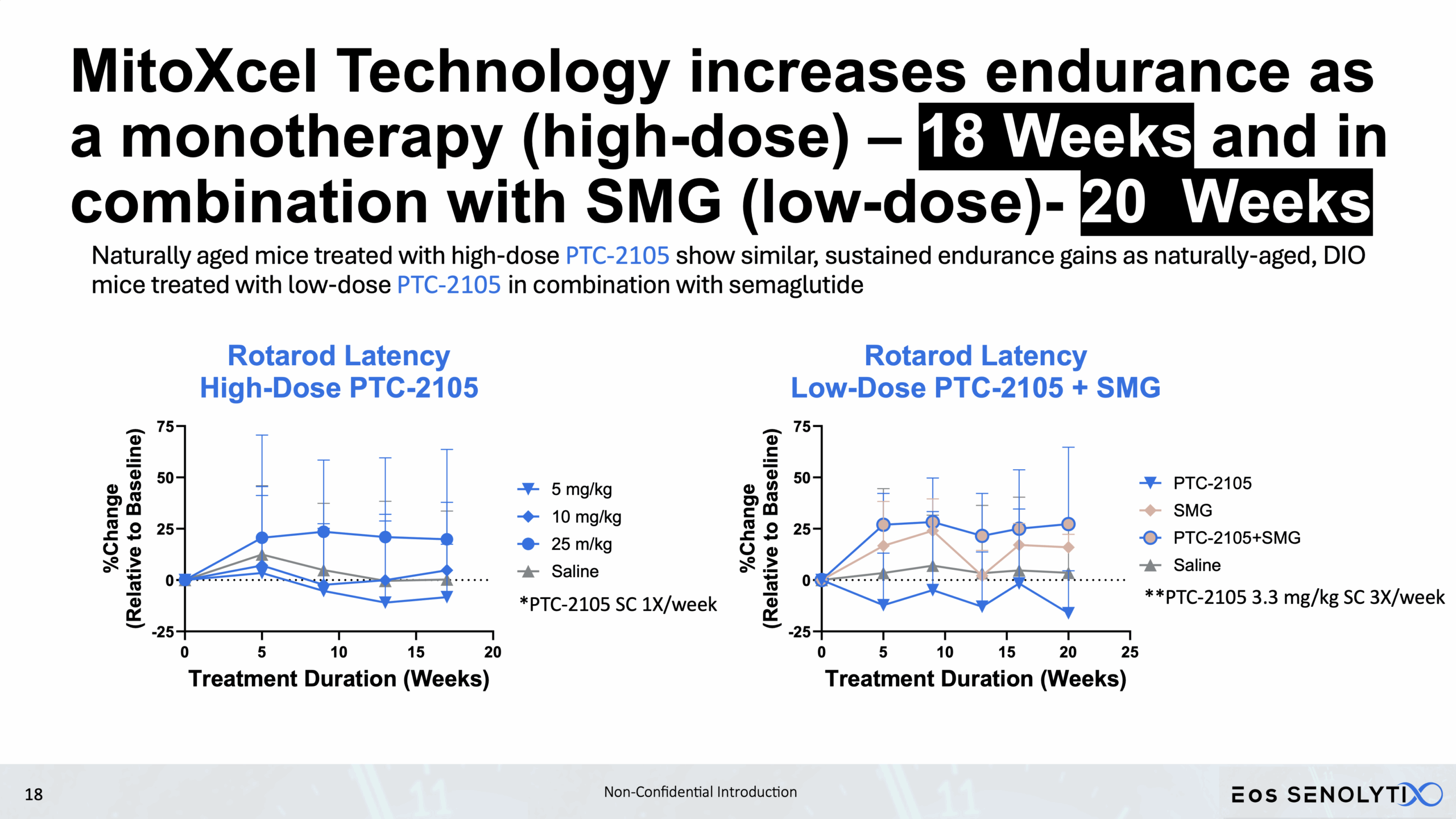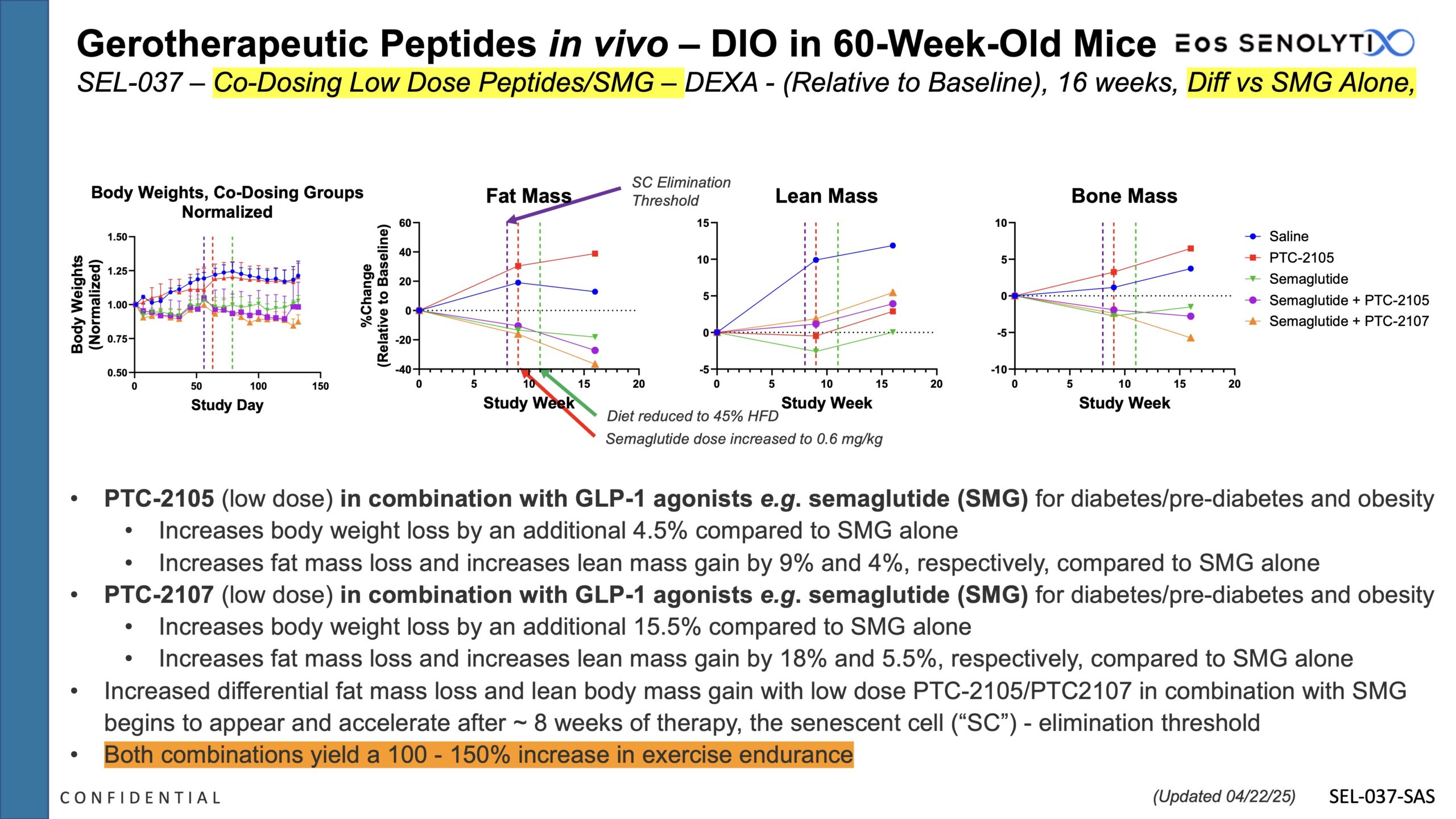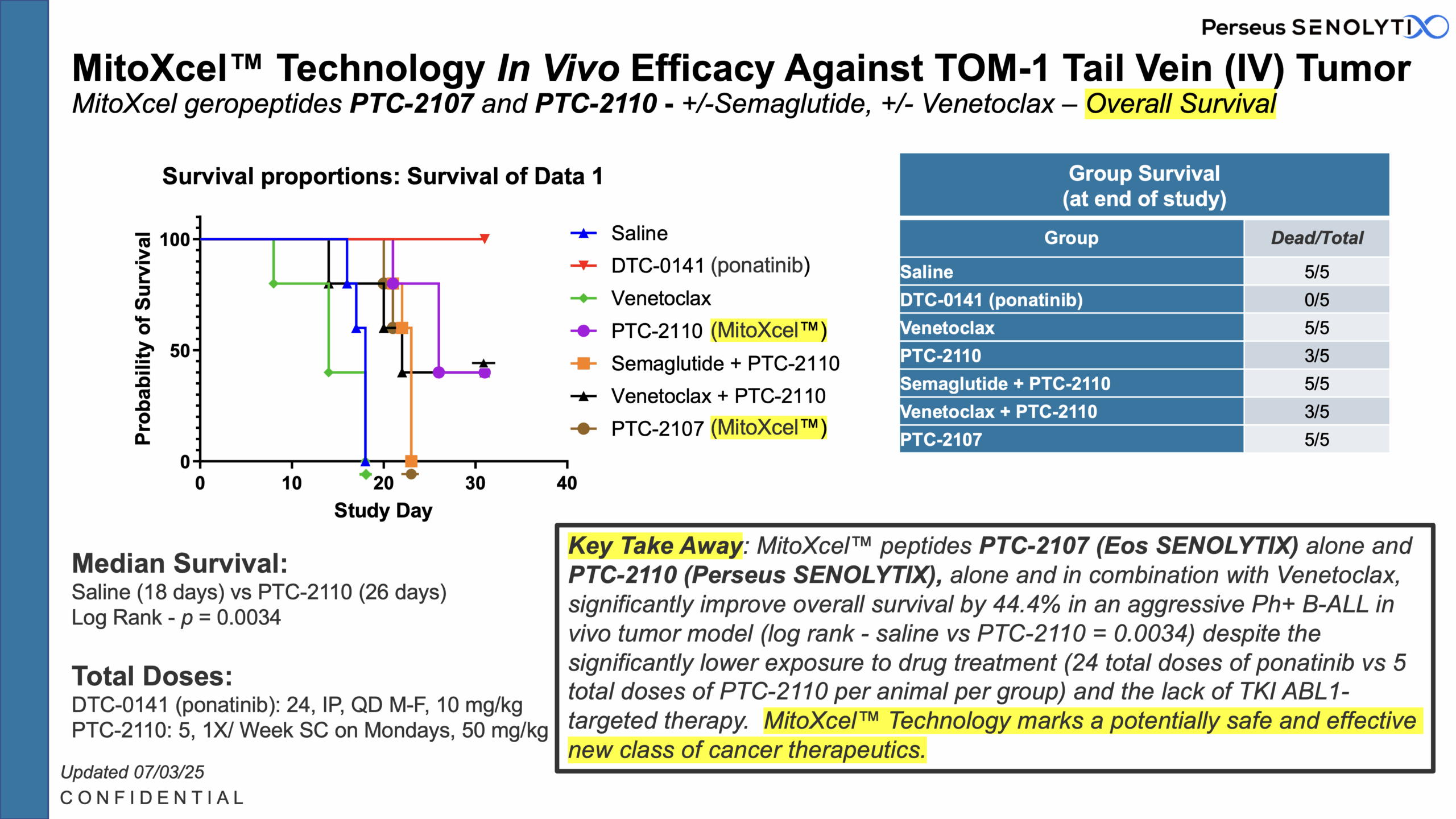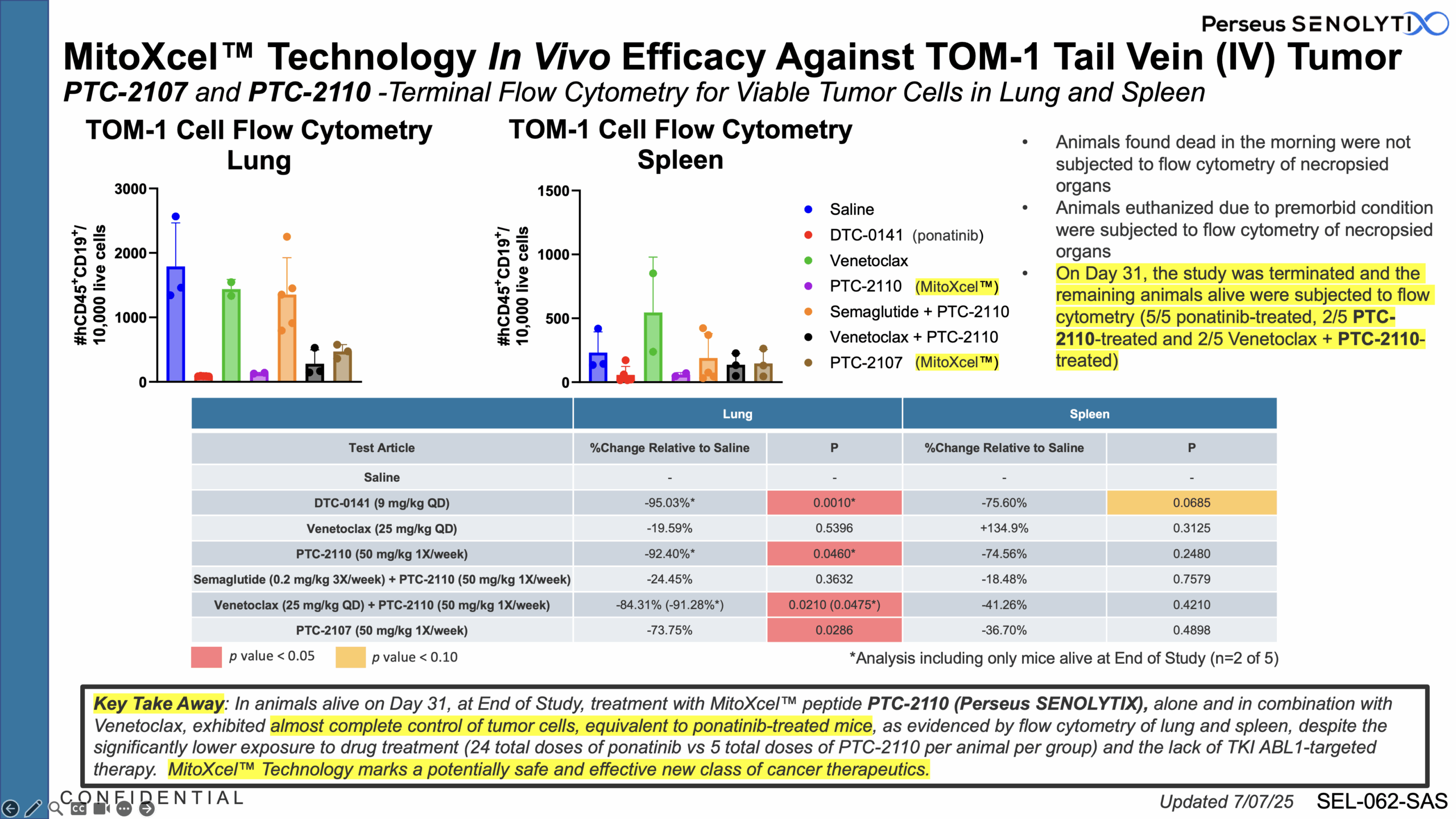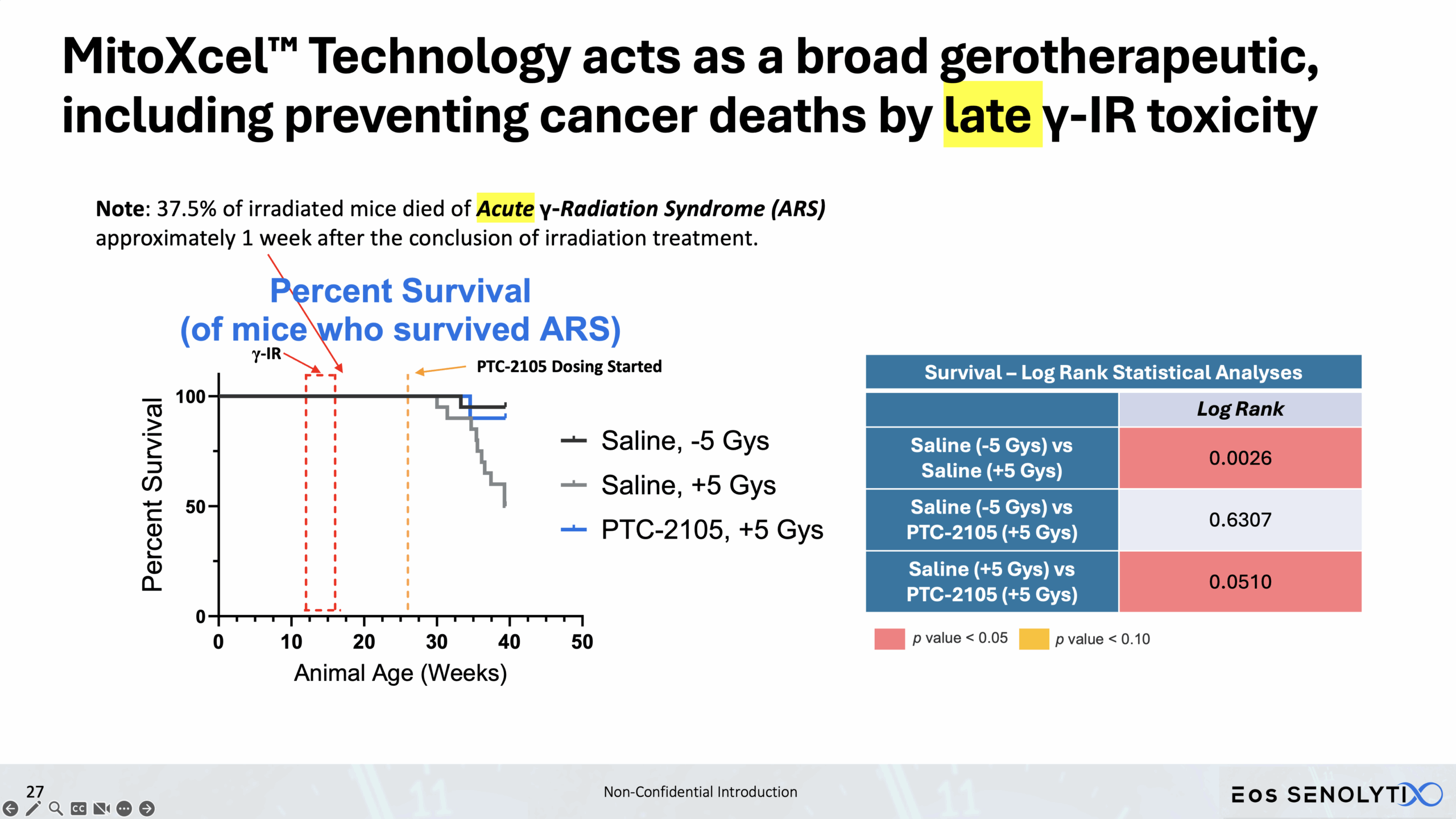Our MitoXcel™ geropeptide and oncopeptide clinical candidates are:
-
Eos SENOLYTIX geropeptides – PTC-2105, PTC-2107, and PTC-2113
-
Perseus SENOLYTIX oncopeptides – PTC-2109, PTC-2110, PTC-2117 and PTC-2128
-
Ponce Aurora – cosmetic peptides – PTC-2111 and PTC-2116
Key Attributes:
-
18- to 30-amino acids in length
-
Cross the blood brain barrier
-
Administered via SC injection over an 8-16 week course of treatment in pre-clinical models
Key Findings:
-
Selective Elimination of Senescent Cells: In all organs of the body, including the brain, in a dose dependent manner
-
Reduced Systemic Inflammation: Significant decrease in SASP biomarkers
-
Tissue Remodelling to a Healthier Phenotype in Muscle and Fat: Improved body composition including a reduction in fat but an increase in lean body and bone mass
-
Improved Physical Health: Enhanced metabolism, muscle strength, and exercise endurance.
-
Cognitive Benefits: Improved memory and motor coordination.
-
Dose Response Curve Demonstrated
-
Acts only on Aging- or Cancer-Specific Targets
-
Safety Profile: Without demonstrable evidence of toxicity at up to 10X the efficacious dose after up to 16 weeks of continuous dosing. Normal liver enzyme levels and no adverse effects observed.
Mechanism of Action: Selectively Target the Mitochondria in Senescent, Non-Senescent Cells, and Cancer Cells
-
Completely novel, aging-specific mechanism of action
-
Two key mechanisms, both targeting the Inner Mitochondrial Membrane Potential (Δψm)
-
Validated in three species: human (in vitro), mouse (in vivo) and C. elegans (in vivo)


